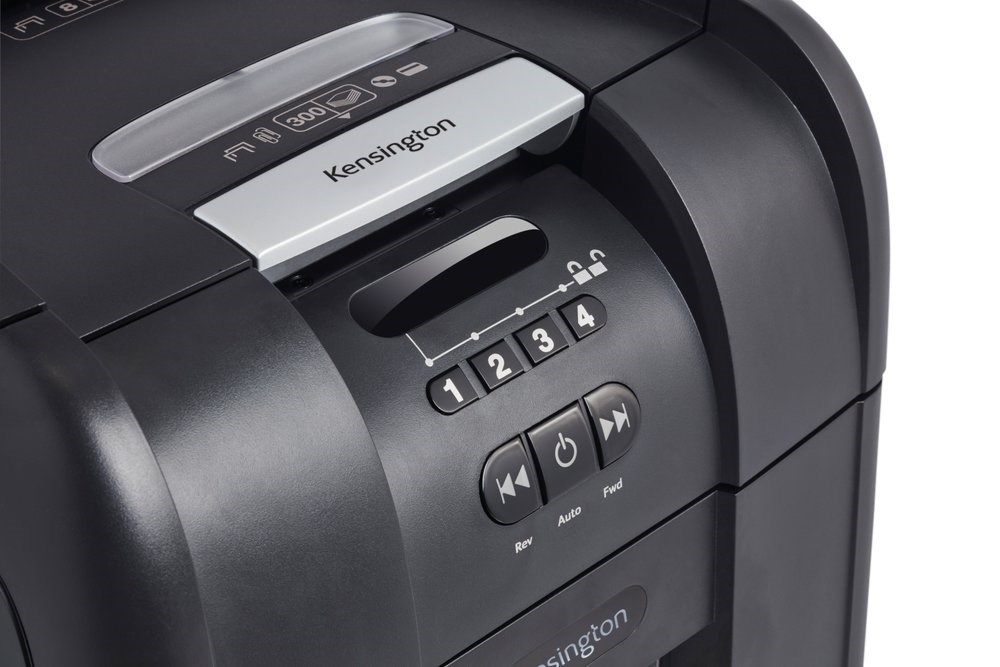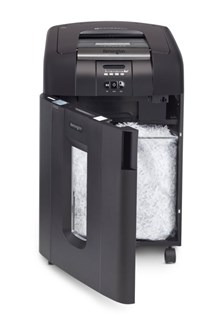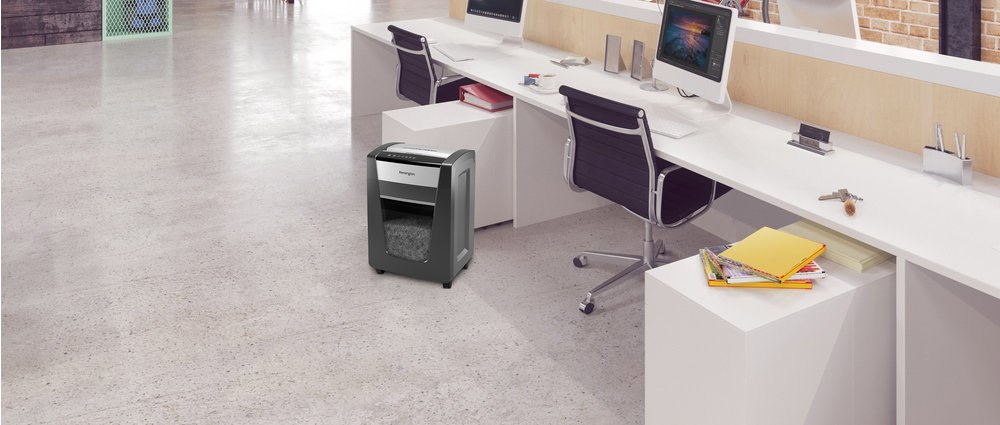
Paper is far from obsolete. Despite the growth of digital recordkeeping, many important forms and other types of documentation will continue to exist in physical copies for years to come.
Reasons for paper’s persistence range from needing ink signatures to satisfy lawyers or contractual obligations, to not having the time or money to scan every last record into a new system.
If you want an idea of how relevant paper-based records remain, search for “paperless office myth or reality,” and see how often this question – of whether a critical mass of organizations have finally gone paperless – has gotten asked over the years. Reaching the paper-free office is a sort of Sisyphean ordeal: It requires a lot of effort, but always stays out of reach.
Why commercial paper shredders are essential
However, organizations continue to modernize their recordkeeping practices, not only by digitizing some, if not all, company records, but also by shredding many others. A commercial paper shredder is essential in this context. It can reliably dispose of any unneeded and/or sensitive documents, paper clips and all, plus it may destroy common in-office items such as posters, credit cards, and optical media (CDs, DVDs, and Blu-ray Discs), too.
What makes for a standout commercial shredder? For starters, it will be much more powerful than a consumer-grade shredder, with the ability to tear through a large number of documents in a relatively short amount of time and render them completely unreconstructable. It may also contain differentiating features such as large sheet and bin capacities, anti-jam systems, and security PINs.
Let’s look at some of the most important features to scrutinize when shopping for paper shredders, and which models can provide them.
The right security level, for truly safe destruction
Commercial paper shredders aren’t being used for low-stakes tasks. They are regularly relied upon to safely destroy documents containing sensitive and confidential information.
Employee performance assessments, pieces of business mail, physical contracts, training manuals, annual budgets, company correspondence, and drafts – these are just some of the items requiring disposal via a heavy-duty commercial shredder. Thorough disposal ensures that these documents don’t precipitate identity theft or expose an organization to legal liability and regulatory action.
According to Proofpoint, one-third of all U.S. adults have been affected by identity theft. Mail and documents that don’t get properly shredded are some of the most common culprits in ID theft, as they may contain personally identifiable information. They also trigger data breaches. In 2015, a Denver compounding pharmacy was fined $125,000 by federal regulators for improper disposal of unshredded records covered under HIPAA.
Shredding them into sufficiently tiny pieces necessitates a shredder with the proper security level and cut style. The DIN 66399 standard defines the different levels of shredding security, which range from P-1 (strip cut) to P-7 (micro cut):
- P-1 to P-2: Strip cut
- P-3 to P-4: Cross cut
- P-5 to P-7: Micro cut

For commercial-grade shredding tasks, it’s prudent to use at least a P-4 (cross cut) shredder for adequate destruction. A P-5 shredder, which does micro cuts, provides even more peace of mind. The difference between a basic strip-cut shredder that might be purchased on Amazon and a commercial paper shredder like this Kensington model is stark. A micro cut shredder will cut an A4 piece of paper into more than ten times as many particles as a strip cut shredder.
Features for productive workflows
Someone shredding documents at a small or medium-sized business might only need to shred a few sheets of paper at a time. Accordingly, a manual feed shredder would likely suffice. For workflows at a larger office, though, greater speed is required.
To meet a wide range of requirements, commercial shredders offer different modes of operation and capacities:
Paper feed type and sheet capacity
Auto-feeding paper shredders are perfect for large-volume shredding jobs that would otherwise consume a lot of time.
For example, this Kensington shredder, the OfficeAssist Auto Feed Shredder A3000 Anti-Jam Cross Cut, allows its operator to load up to 130 sheets at a time and walk away while it completes. No need to stand around and keep manually loading 10 to 15 sheets at a time. For extra protection, it also allows for a digital PIN that locks the shredder until the job completes. That ensures that no one stops the job or gets injured in the process, making it both a security and safety feature.

Manual feed shredders require more attention, but can still work well if an organization doesn’t have to perform a lot of huge shredding operations. The Kensington OfficeAssist Shredder M100S Anti-Jam Cross Cut can load 10 sheets at a time and has a slim design that makes it ideal for smaller workspaces. Like the A3000, it also has a P-4 security rating for cross cutting documents.
Related to feed type, commercial shredders also vary in their sheet capacities. This measurement applies to how many sheets they can load at a time. As the A3000 versus M100S comparison shows, auto-feed shredders have higher sheet capacities than manual ones.
Bin capacity

A paper shredder will eventually have to be emptied. How long it can go before its storage receptacle is removed will depend on its bin capacity. A commercial paper shredder can typically hold hundreds of sheets’ worth of shredded material, so that multiple jobs can be completed before someone has to empty it.
The Kensington OfficeAssist™ Auto Feed Shredder A6000 Anti-Jam Cross Cut, for instance, has a 21-gallon bin capacity, which is equivalent to more than 800 sheets of shredded paper. It also has an indicator light so that the user knows exactly when it’s full.
While not all shredders can store as much as the A6000, any commercial shredder worth its salt should be able to accommodate at least a few hundred shredded sheets. Completing an in-depth shredding job, whether with an auto or manual feed shredder, is more efficient when the person doing the shredding doesn’t have to keep stopping and dumping out the bin.
Heavy-duty performance and continuous operation, for scalable shredding
Popular depictions of paper shredding in movies and TV shows often involve strip cut shredders, which generate particles that inevitably get reconstructed by characters who look for them in dumpsters. The reality of commercial paper shredding is much different, as these machines generate much smaller particles and in much greater volumes.
Their superior performance is rooted not only in their higher security levels and sheet and bin capacities, but also in their abilities to shred even heavy, dense materials and to do so for extended periods of time. When deciding on which commercial shredder to buy, consider how it handles staples, paper clips and non-paper media, as well as its run and cooldown times.
The Kensington OfficeAssist Shredder M200-HS Anti-Jam Micro Cut shows what’s possible with a top-level commercial shredder, as it can run for 240 minutes continuously while micro cutting everything into P-5 particles. Paperclips and staples also don’t need to be removed before sheets are placed into this shredder’s manual feed, which can handle up to 15 sheets in a single pass.

Other models like the previously discussed A6000 can also thoroughly shred much more than standard A4 office paper containing staples or paperclips. They can also take care of junk mail, credit cards, glossy documents, and optical discs. Everything gets turned into 5/32" X 1 37/64" particles, as per its P-4 rating.
Even with this high level of performance, both the A6000 and other Kensington shredders have quiet motors that let them run comfortably with office environments. Employees can shred without having to worry about if they’re disrupting a busy work environment.
Jam proofing, self-maintenance and power saving, for overall efficiency
Let’s say someone is shredding a stack of documents and everything’s going great, but then something goes wrong and all of the sudden they’re dealing with a paper jam. These jams can be time-consuming and frustrating to work through, creating a big backlog of documents for the organization to shred.
Fortunately, Kensington’s commercial shredders come with built-in anti-jam technology that spares users the inconvenience of such setbacks. This feature automatically reverses the shredder’s blades when too much paper passes through them, preventing jams. Some models, like the A3000, also do a blade reversal after each job for self-cleaning that helps avoid future incidents.
Depending on the model, shredders can also save organizations and electricity-related expenses. Features like Intelligent Energy Save on Kensington shredders put them into standby mode when they’re not in active use, conserving power while still allowing them to be reactivated as needed.
Overall, commercial paper shredders excel at saving organizations time in securely disposing of documents and other items that may contain sensitive information.
Choose the best commercial paper shredder for your business
While there are numerous similarities across commercial shredders, the details matter. Evaluating the particular needs of your business will determine if you need a P-4 or P-5 shredder, an auto or a manual feed, or a 200- or 800-sheet capacity bin, for instance.
Kensington’s commercial shredders can meet a broad spectrum of requirements for performance, size, security level, and more. Visit this page, where you can filter options by specifications, to learn more.